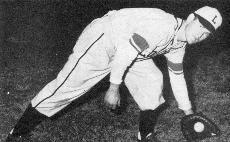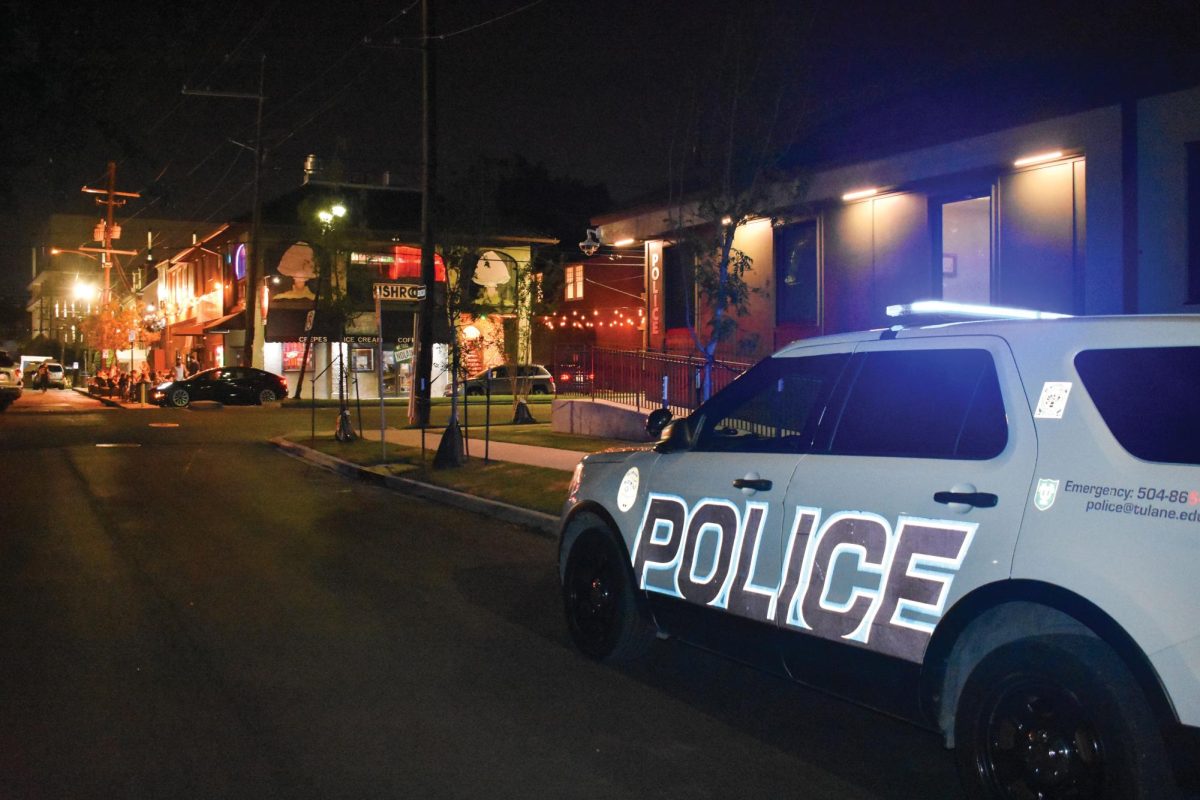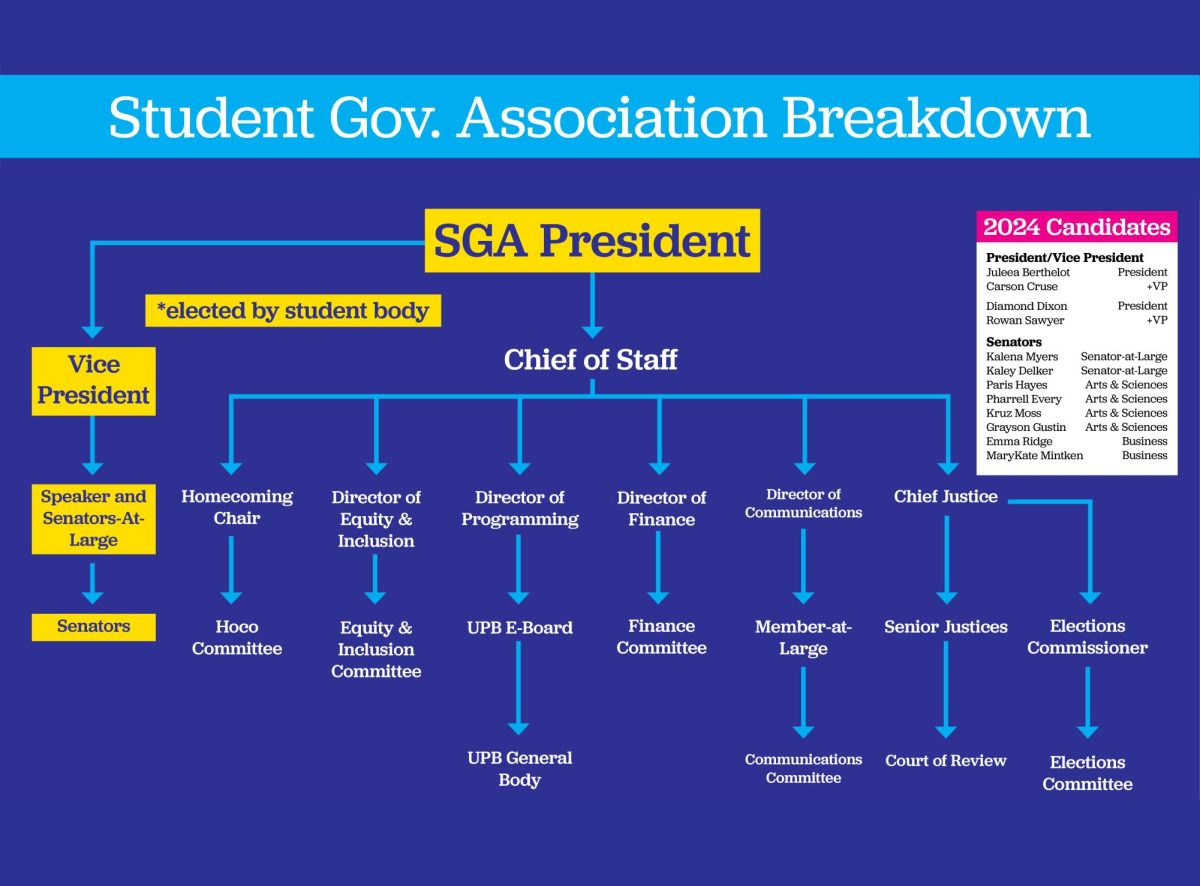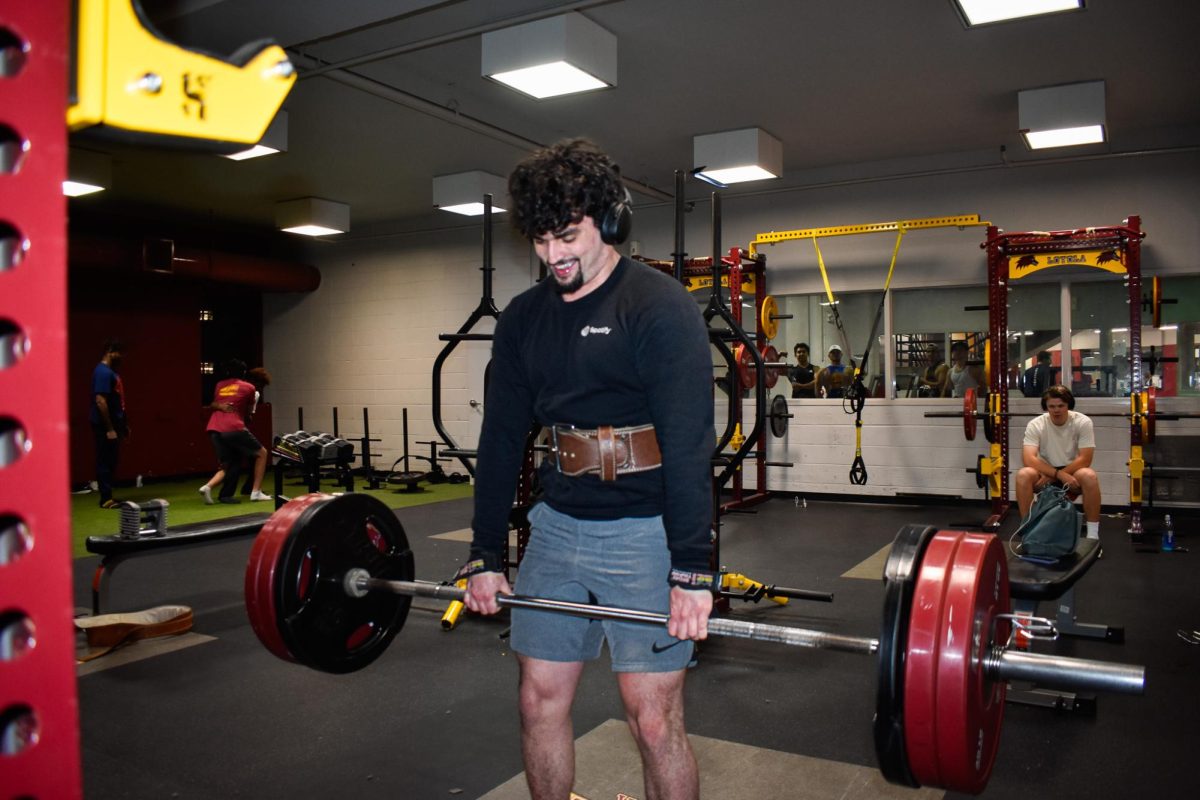It was 1947 – two springs after the Allies had put the Third Reich to bed and the spring Jackie Robinson broke the color barrier in baseball – and Russ Cresson was engaging in one of the reasons he loved the world: playing catcher for Loyola University. “His life,” he called it.
On the mound one afternoon was a tiring Bob Gibbens, an ace Wolfpack pitcher that the New York Yankees salivated over. Who Loyola was ahead of escapes Cresson’s recollection, but what matters is Gibbens was working with a three-run lead in the seventh inning, and his arm “had had enough of it.”
Cresson asked the umpire for a timeout and trotted to the mound, inquiring of his pitcher simply, “Hey, Bob? You got a date tonight?”
Puzzled, Gibbens answered wearily, “Yeah, Russ.” He was taking out his sweetheart, Priscilla. “You?”
Cresson huddled closer and told him, out of the audience and opposing batter’s earshot, “Why don’t you get settled down so we can get this over with, and you can get the hell home?”
And Gibbens did just that, simply muttering, “Okay,” and disposing of the batters in a timely manner, before dark and on time for his date.
“Afterward, everyone said, ‘I don’t know what you told him, but it certainly helped him. You really knew what he was doing wrong and how to fix it.’ But it had nothing to do with baseball.”
Cresson guffawed, tickled by the fast one he pulled on the Wolfpack’s fans (they really thought he discussed pitching form on his trips to the mound) and the sheer fun he had on the diamond.
Cresson, 86, was awarded the St. Sebastian award “for continuous support and dedication” to Loyola’s athletic program on Feb. 10. To boot, the services by which he merited that award were performed in the three most wholesome love affairs of his life he couldn’t get enough of: baseball (catcher from 1946-1948), photography (university photographer for 41 years) and Mrs. Claire Cresson (husband from July 25, 1950).
‘THEY TREATED US LIKE HEROES’
Most New Orleans natives celebrate their 21st birthday by downing their first beer legally at a bar. Russ Cresson celebrated it by signing up for the U.S. Navy to help save the world by downing Hitler.
The ships he served on chased Nazi submarines in the Gulf of Mexico – “They sank 43 of our big merchant ships in March of 1942,” Cresson said – and protected merchant convoys from U-boat torpedoes during World War II.
“We’d sail them from Guantanamo Bay, Cuba, or Key West, Fla.,” Cresson remembered, right up the Atlantic coast to the port of New York, all the while playing a perilous game of undersea cat and mouse with Nazi gunboats.
Whenever the ships he served on docked in ports like Miami or New Orleans, he’d wind down by playing catcher for service teams. Cresson was especially fond of playing in the Crescent City, for a team out of the naval base in Algiers.
“They treated the service ballplayers wonderful. Like heroes,” Cresson said. “They’d hold the cafeteria open so we could come and eat, and they’d have a big drum of lemonade we’d just dip our pitchers into.”
In the dog days of a New Orleans summer, brandishing long-sleeved wool uniforms and catcher’s equipment, Cresson “lost so much water” he could drink the whole drum himself.
He was never an exceptional hitter – in a stretch of 17 at-bats in the 1947 season for Loyola, Cresson recorded three hits, all singles – but an able backstop and infielder. Cresson held his weight at third base at Warren Easton High School in Mid-City and lettered at shortstop for the Wolfpack his sophomore season before catching as a junior.
It wasn’t stardom on the diamond he starved for, though. It was just being around the ballgame’s personalities, like Toni Simona, who played third base for a women’s baseball team out of Jax Brewery.
“She was as strong as a man, and she cursed like one, too,” Cresson explained.
One day she asked Cresson to pitch batting practice in the offseason, but Cresson was reluctant because the underhand technique with which the women’s league pitched was hard to master. “It took me a while to have control,” he explained.
But scared to draw the ire of the man-like Simona, Cresson took the mound anyway – and struck the first batter “right in the breast and knocked her down.”
Cresson ran over to her, lamenting, “You see? This is why I didn’t want to pitch!”
Responded tough-as-nails Simona, “Russ, don’t worry. That’s what I want. It’s good for her.”
SHOOTING THE STARS
It was an age when Sigma Alpha Kappa Sweethearts were flown to the formal dance venue in war era, twin-engine Cessnas on humid, late-spring evenings. It was an age where Maroon staff photographers like Cresson captured the SAK president escorting the sweetheart down from the cabin-door by the hand.
Hollywood stars stayed at the old Roosevelt Hotel in between Baronne and Loyola streets, as did chief justices and decorated army generals, and it was the art of setting these American icons into relaxed, natural poses for photographs Cresson starved for.
He got into the whole gig because his brother Raymond scored him the opportunity, and to supplement the $75 a month Cresson made from the G.I. bill, he took him up on it. But he later grew fonder of it because the subjects he photographed, no matter how prominent, were “plain as an old shoe” when talked to in-depth.
“We’d talk about whatever they wanted to,” Cresson said. So if Supreme Court Chief Justice Earl Warren, of the commission that investigated the assassination of President Kennedy, wanted to talk about old furniture in his house, they’d talk old furniture.
“And then the girl movie stars, I’d make them give me a kiss after I took their picture,” Cresson said in a furtive whisper. Rest assured – Mrs. Claire Cresson, whom his brother introduced him to, was nowhere near the Roosevelt’s lobby or in his heart. Yet.
“My brother introduced me to photography and my wife,” he said. “What else is there?”
THE LUCKIEST MAN IN THE WORLD
Cresson admits he had two advantages most men on campus didn’t – he had a 1937 Packard on campus and knew something about women most men don’t.
She was very popular, he remembers. He had his work cut out for him.
“But women are very personal by nature,” Cresson said. “So first thing I do is try to give them a nickname.”
Hers was Presh, for “precious.” And Presh hiked rides from him down St. Charles Avenue to her house, the one he always rode by -“but never thought he’d marry the girl living there” – a lot in those days.
And, out of left field, it hit Cresson what was right in the passenger seat was the most important thing in Cresson’s eyes: The way she treated her nephew, he knew one day she’d be just the only kind of mother he’d want for his kids. So he “attacked her like you attack an island.”
On one of those rides under the oaks, Cresson leaned in close to her and said, “Presh, you know I’m the luckiest man in the world?”
She said, “Yeah, Russ. I know. You have a car. And you wear a new suit every time I’m with you.”
Cresson smiled, interrupted, “See? Women notice that. But I told her, ‘No. It’s because I’m lucky that someone as beautiful as you is in love with me.'”
An astonished Presh answered, “Russ, I’m not in love with you at all!”
“Aww, you’re fighting it. It’s not good to fight it,” he said. But the quiet thought was in her head and after that car ride, she began to let her guard down.
So much so that the quiet thought later grew to love, marriage and children.
Eight of them. Eight Loyola graduates. And after paying eight Loyola tuitions, the award’s been a long time coming.
‘GROWING OLD AIN’T FOR SISSIES’
Cresson today suffers from “catcher’s knee.” The backstop, once limber enough to explode up from his crouch behind the plate and throw out runners stealing second, now cringes at the excruciating ordeal that is getting up from his recliner and walking to the refrigerator.
As of six months ago, his memory’s been failing him. “Boy, I tell you, getting old ain’t for sissies,” he quipped.
But to win the St. Sebastian award – essentially because of merits he accrued from, in his eyes, three of the most beautiful things in the world – is too easy.
Said Cresson, “I’ve never met a man who lived a life better than mine.”
Ramon Antonio Vargas can be reached at [email protected].
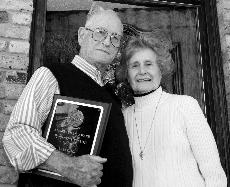
Former Wolfpack catcher and university photographer Russ Cresson, B’49, holds both the St. Sebastian Award plaque he was given during the Feb. 10 Hall of Fame festivities and his wife, Claire. Baseball, photography and Claire are what Cresson loves most. (Tyler Kaufman)
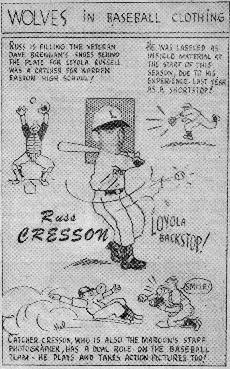
A 1947 Maroon cartoon portrays Russ Cresson, B’49, playing baseball and shooting pictures, things he did simultaneously.







